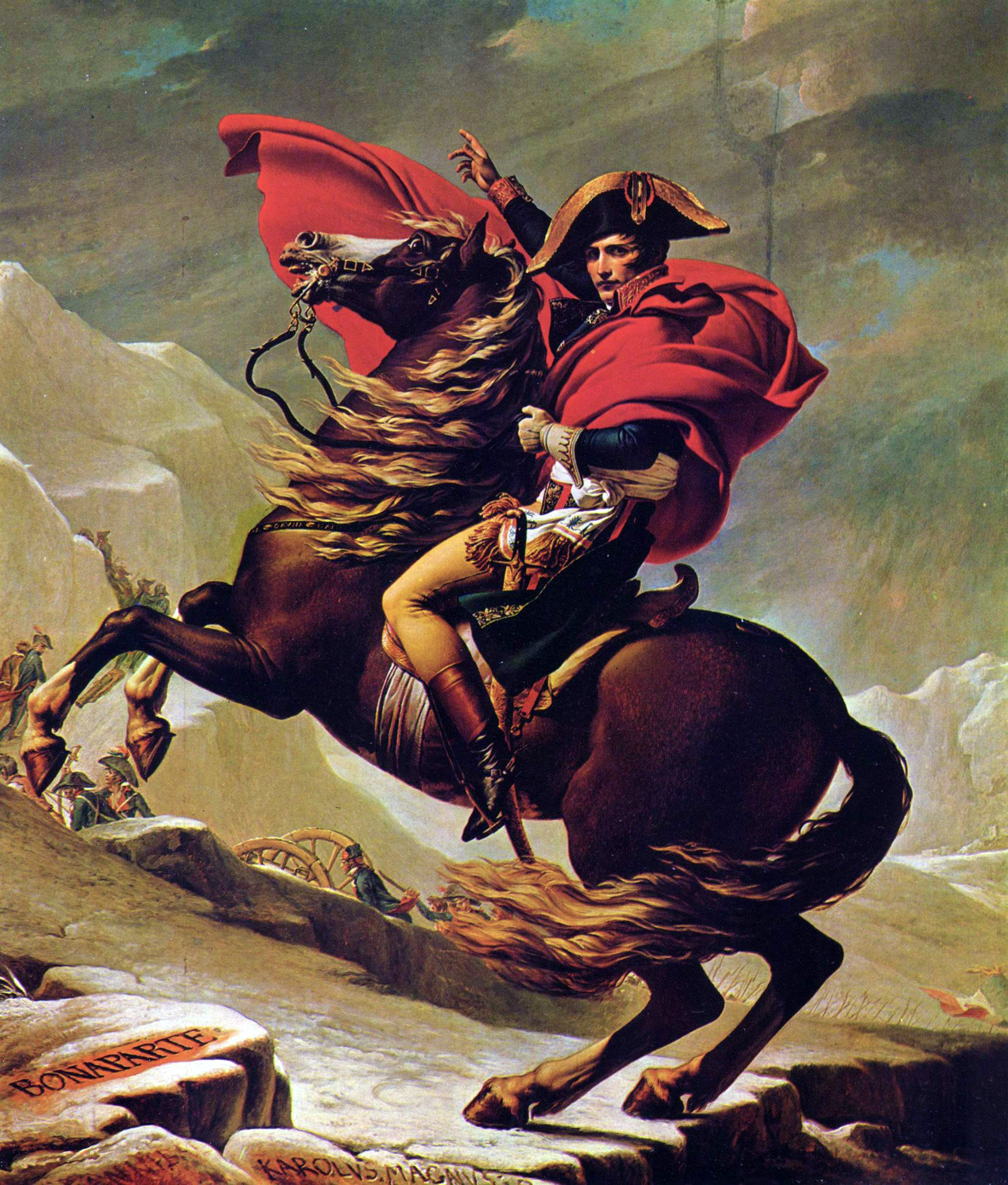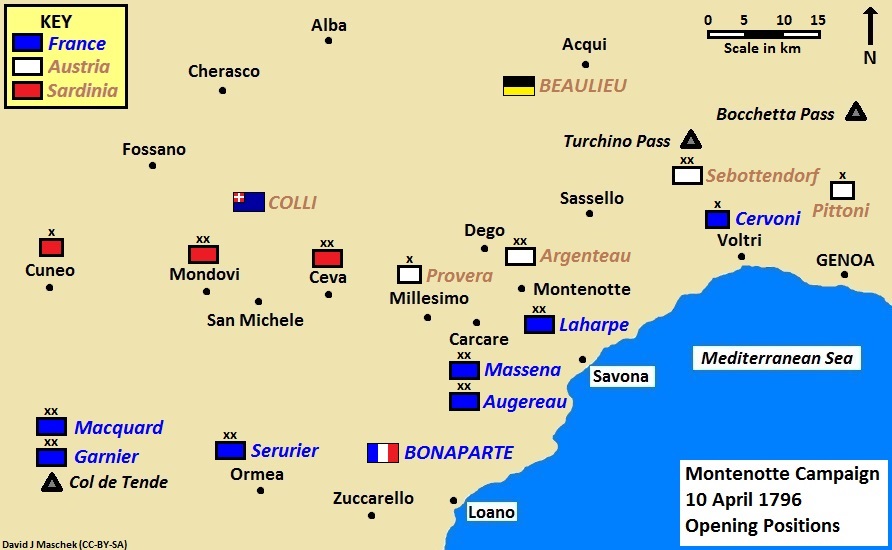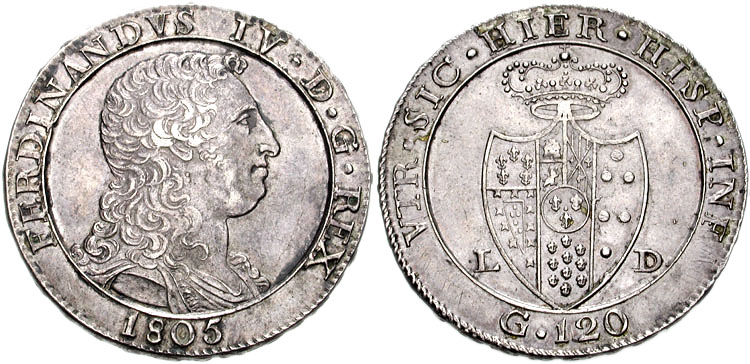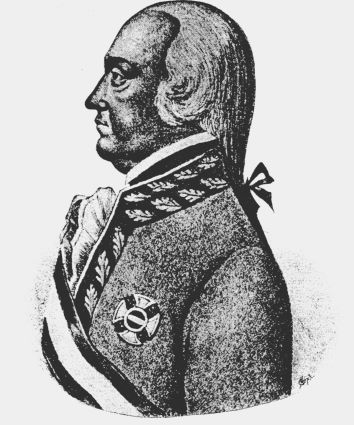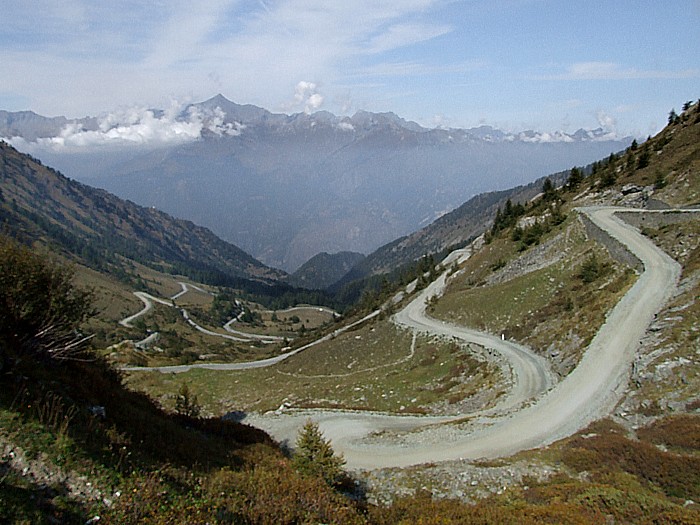|
Italian Campaigns Of The French Revolutionary Wars
The Italian campaigns of the French Revolutionary Wars (1792–1801) were a series of conflicts fought principally in Northern Italy between the French Revolutionary Army and a Coalition of Austria, Russia, Piedmont-Sardinia, and a number of other Italian states. The campaign of 1796-1797 brought prominence to Napoleon Bonaparte, a young, largely unknown commander, who led French forces to victory over numerically superior Austrian and Sardinian armies. First Coalition (1792–1797) The War of the First Coalition broke out in autumn 1792, when several European powers formed an alliance against Republican France. The first major operation was the annexation of the County of Nice and the Duchy of Savoy (both states of the Kingdom of Piedmont-Sardinia) by 30,000 French troops. This was reversed in mid-1793, when the Republican forces were withdrawn to deal with a revolt in Lyon, triggering a counter-invasion of Savoy by the Kingdom of Piedmont-Sardinia (a member of the Fi ... [...More Info...] [...Related Items...] OR: [Wikipedia] [Google] [Baidu] |
Northern Italy
Northern Italy (, , ) is a geographical and cultural region in the northern part of Italy. The Italian National Institute of Statistics defines the region as encompassing the four Northwest Italy, northwestern Regions of Italy, regions of Piedmont, Aosta Valley, Liguria and Lombardy in addition to the four Northeast Italy, northeastern Regions of Italy, regions of Trentino-Alto Adige/Südtirol, Trentino-Alto Adige, Veneto, Friuli-Venezia Giulia and Emilia-Romagna. With a total area of , and a population of 27.4 million as of 2022, the region covers roughly 40% of the Italian Republic and contains 46% of its population. Two of Italy's largest metropolitan areas, Milan and Turin, are located in the region. Northern Italy's GDP was estimated at Euro, €1 trillion in 2021, accounting for 56.5% of the Italian economy. Northern Italy has a rich and distinct culture. Thirty-seven of the fifty-nine List of World Heritage Sites in Italy, World Heritage Sites in Italy are found in the re ... [...More Info...] [...Related Items...] OR: [Wikipedia] [Google] [Baidu] |
Louis-Alexandre Berthier
Louis-Alexandre Berthier, prince de Neuchâtel et Valangin, prince de Wagram (; 20 November 1753 – 1 June 1815) was a French military commander who served during the French Revolutionary Wars and the Napoleonic Wars. He was twice Minister of War (France), Minister of War of France and was made a Marshal of the Empire in 1804. Berthier served as chief of staff to Napoleon Bonaparte from his Montenotte campaign, first Italian campaign in 1796 until his Treaty of Fontainebleau (1814), first abdication in 1814. The operational efficiency of the ''Grande Armée'' owed much to his considerable administrative and organizational skills. Born into a military family, Berthier served in the American Revolutionary War and survived suspicion of monarchism during the Reign of Terror before a rapid rise in the ranks of the French Revolutionary Army. Although a key supporter of the coup against the French Directory, Directory that gave Napoleon supreme power, and present for his greatest victor ... [...More Info...] [...Related Items...] OR: [Wikipedia] [Google] [Baidu] |
Michelangelo Alessandro Colli-Marchi
Michelangelo Alessandro Colli-Marchi or Michelangelo da Vigevano or Michael Colli (1738 Milan – 22 December ,Florence 1808) entered the Habsburg monarchy, Habsburg Austrian army as a commissioned officer and became a general officer after fighting in the Seven Years' War, War of the Bavarian Succession, and Austro-Turkish War (1787-1791), Austro-Turkish War. During the War of the First Coalition, he was loaned to the Kingdom of Sardinia-Piedmont for three years. In 1796, his army was defeated by Napoleon Bonaparte in a swift campaign that knocked Sardinia-Piedmont out of the war. In early 1797, he was given command of the army of the Papal States, but his troops were defeated at Battle of Faenza, Faenza. Early career Michelangelo Alessandro Colli-Marchi was born in either Vigevano or Milan in 1738. His father Giuseppe Antonio Colli (1698–1766) had represented Vigevano with the Habsburg government in Milan and was granted a title of nobility. Well educated, Colli was commissione ... [...More Info...] [...Related Items...] OR: [Wikipedia] [Google] [Baidu] |
Ferdinand III, Grand Duke Of Tuscany
Ferdinand III(; ; English: ''Ferdinand Joseph John Baptist''. (6 May 1769 – 18 June 1824) was Grand Duke of Tuscany from 1790 to 1801 and, after a period of disenfranchisement, again from 1814 to 1824. He was also the Prince-elector and Grand Duke of Salzburg (1803–1805) and Duke and Elector (to 1806, Grand Duke from 1806) of Würzburg (1805–1814). Biography Ferdinand was born in Florence, Tuscany, into the House of Habsburg-Lorraine on 6 May 1769. He was the second son of Leopold, then Grand-Duke of Tuscany, and Infanta Maria Luisa of Spain. As the Grand Duchy was a secundogeniture, when his father was elected Emperor of the Holy Roman Empire, Ferdinand succeeded him as Grand Duke of Tuscany, officially taking the office on 22 July 1790. In 1792, during the French Revolution, Ferdinand became the first monarch to recognize the new French First Republic formally, and he attempted to work peacefully with it. As the French Revolutionary Wars commenced, however, the rule ... [...More Info...] [...Related Items...] OR: [Wikipedia] [Google] [Baidu] |
Ferdinand I Of The Two Sicilies
Ferdinand I (Italian language, Italian: ''Ferdinando I''; 12 January 1751 – 4 January 1825) was Kingdom of the Two Sicilies, King of the Two Sicilies from 1816 until his death. Before that he had been, since 1759, King of Naples as Ferdinand IV and King of Sicily as Ferdinand III. He was deposed twice from the throne of Naples: once by the revolutionary Parthenopean Republic for six months in 1799, and again by a Invasion of Naples (1806), French invasion in 1806, before being restored in 1815 at the end of the Napoleonic Wars. Ferdinand was born in Naples as the third son of Charles III of Spain, King Charles VII and Maria Amalia of Saxony, Queen Maria Amalia. In August 1759, Charles succeeded his half-brother Ferdinand VI of Spain as King Charles III, but treaty provisions made him ineligible to hold all three crowns. On 6 October, he abdicated his Neapolitan and Sicilian titles in favour of his third son, Ferdinand, because his eldest son Infante Philip, Duke of Calabria, Ph ... [...More Info...] [...Related Items...] OR: [Wikipedia] [Google] [Baidu] |
Alexander Suvorov
Count Alexander Vasilyevich Suvorov-Rymniksky, Prince of Italy () was a Russian general and military theorist in the service of the Russian Empire. Born in Moscow, he studied military history as a young boy and joined the Imperial Russian Army at the age of 17. Promoted to colonel in 1762 for his successes during the Seven Years' War, his victories during the War of the Bar Confederation included the capture of Kraków and victories at Battle of Orzechowo, Orzechowo, Battles of Lanckorona#Third clash (Battle of Lanckorona), Lanckorona, and Battle of Stołowicze, Stołowicze. His reputation rose further when, in the Russo-Turkish War (1768–1774), Russo-Turkish War of 1768–1774, he Stormings of Turtucaia, captured Turtukaya twice and won a decisive victory at Battle of Kozludzha, Kozludzha. After a period of little progress, he was promoted to general and led Russian forces in the Russo-Turkish War (1787–92), Russo-Turkish War of 1787–1792, participating in the Siege o ... [...More Info...] [...Related Items...] OR: [Wikipedia] [Google] [Baidu] |
Paul I Of Russia
Paul I (; – ) was Emperor of Russia from 1796 until his assassination in 1801. Paul remained overshadowed by his mother, Catherine the Great, for most of his life. He adopted the Pauline Laws, laws of succession to the Russian throne—rules that lasted until the end of the Romanov dynasty and of the Russian Empire. He also imposed the first limitations on serfdom in Russia, serfdom with the Manifesto of three-day corvee, sought to curtail the privileges of the Russian nobility, nobility, pursued various military reforms which were highly unpopular among officers and was known for his unpredictable behavior, all of which contributed to the conspiracy that would take his life. In 1799 he brought Russia into the War of the Second Coalition, Second Coalition against First French Republic, Revolutionary France alongside Kingdom of Great Britain, Britain and Habsburg monarchy, Austria; the Russian forces achieved several victories at first but withdrew after facing setbacks. Paul ... [...More Info...] [...Related Items...] OR: [Wikipedia] [Google] [Baidu] |
József Alvinczi
Freiherr Joseph Alvinczi von Borberek a.k.a. Baron József Alvinczi de Borberek (; 1 February 1735 – 25 September 1810) was a soldier in the Habsburg monarchy, Habsburg Army and a field marshal of the Austrian Empire. He is remembered for handing Napoleon his first two defeats, at the battles of Second Battle of Bassano, Bassano and Battle of Caldiero (1796), Caldiero, both in 1796 and just days apart. Napoleon would later remark that Alvinczi was the best general he had fought thus far. Early career An ethnic Magyars, Magyar, he was born in Transylvania in a place called Vințu de Jos, Alvinc (German: ''Alwintz''), and spent his boyhood in the household of ''Graf'' Franz Gyulai before joining his regiment as a ''Fähnrich'' aged 14. By 1753 he had risen to ''Hauptmann''. During the Seven Years' War, Alvinczi distinguished himself leading a Grenadier (soldier), grenadier company in the battles of Battle of Torgau, Torgau and Battle of Teplitz, Teplitz, where his courageous ... [...More Info...] [...Related Items...] OR: [Wikipedia] [Google] [Baidu] |
Dagobert Sigmund Von Wurmser
Dagobert Sigmund, Count von Wurmser (7 May 1724 – 22 August 1797) was an Austrian field marshal during the French Revolutionary Wars. Although he fought in the Seven Years' War, the War of the Bavarian Succession, and mounted several successful campaigns in the Rhineland in the initial years of the French Revolutionary Wars, he is probably most remembered for his unsuccessful operations against Napoleon Bonaparte during the 1796 campaign in Italy. Although initially in the Army of France during the Seven Years' War, Wurmser left France after Louis reached a peace agreement with Britain, and joined the military of the House of Habsburg. He later took part in the short-lived War of the Bavarian Succession, also called the so-called ''Kartoffelkrieg'' (Potato War). During the French Revolutionary Wars, Wurmser commanded several imperial Habsburg armies on in the Rhine River valley between 1793 and 1795, and perhaps his most conspicuous achievement was the taking of the lines ... [...More Info...] [...Related Items...] OR: [Wikipedia] [Google] [Baidu] |
Francis II, Holy Roman Emperor
Francis II and I (; 12 February 1768 – 2 March 1835) was the last Holy Roman Emperor as Francis II from 1792 to 1806, and the first Emperor of Austria as Francis I from 1804 to 1835. He was also King of Hungary, List of rulers of Croatia, Croatia and List of Bohemian monarchs, Bohemia, and served as the first president of the German Confederation following its establishment in 1815. The eldest son of future Leopold II, Holy Roman Emperor, Emperor Leopold II and Maria Luisa of Spain, Francis was born in Florence, where his father ruled as List of grand dukes of Tuscany, Grand Duke of Tuscany. Leopold became Holy Roman Emperor in 1790 but died two years later, and Francis succeeded him. His empire immediately became embroiled in the French Revolutionary Wars, the first of which ended in Austrian defeat and the loss of the left bank of the Rhine to France. After another French victory in the War of the Second Coalition, Napoleon crowned himself Emperor of the French. In response, ... [...More Info...] [...Related Items...] OR: [Wikipedia] [Google] [Baidu] |
Jean-Mathieu-Philibert Sérurier
Jean-Mathieu-Philibert, comte Sérurier (, 8 December 1742 – 21 December 1819) led a division in the War of the First Coalition and became a Marshal of the Empire under Emperor Napoleon. He was born into the minor nobility and in 1755 joined the Laon militia which was soon sent to fight in the Seven Years' War. After transferring into the regular army as an ensign, he was wounded at Warburg in 1760. He fought in the Spanish-Portuguese War in 1762. He married in 1779 after a promotion to captain. A newly minted major in 1789, the French Revolution sped up promotion so that he was colonel of the regiment in 1792. After leading Army of Italy troops in a number of actions, he became a general of brigade in 1793 and a general of division the following year. Sérurier led a division in Napoleon Bonaparte's Italian campaign of 1796, except during bouts of illness. He especially distinguished himself at the Battle of Mondovì and the Siege of Mantua. In 1799, he again fought i ... [...More Info...] [...Related Items...] OR: [Wikipedia] [Google] [Baidu] |
Thomas-Alexandre Dumas
Army general (France), Army-General Thomas-Alexandre Dumas Davy de la Pailleterie (; 25 March 1762 – 26 February 1806) was a French Army officer who served in the French Revolutionary Wars. Along with fellow French officers and Toussaint Louverture, Abram Petrovich Gannibal from Imperial Russia and Władysław Franciszek Jabłonowski from Poland, Thomas-Alexandre Dumas was noted as a man of African descent (in Dumas's case, through his mother) leading European troops as a general officer. All four commanded as officers in the French Army and apart from Gannibal, who was only Abram Petrovich Gannibal#Education, captain and engineer-sapper in the Army of Louis XV during his formative years, they all gained their general ranks in the French Army, about four decades after Gannibal had done the same in Russia. Yet Dumas was the first Gens de couleur, person of color in the French military to become brigadier general, divisional general, and general-in-chief of a French army. Born ... [...More Info...] [...Related Items...] OR: [Wikipedia] [Google] [Baidu] |
